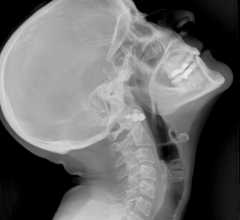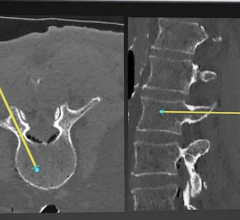
August 24, 2011 – Carestream Health has shipped its 2,500th wireless DRX detector, the company announced. The Carestream DRX-1 was the industry’s first wireless, cassette-size detector. Carestream now has a family of six DRX-base systems that help streamline workflow, improve productivity and enhance patient care in both in-room and mobile environments.
"Our growing portfolio of wireless [digital radiography] DR systems meets healthcare providers’ needs today and allows them to easily and affordably add functionality in the future using DRX as their foundation. This is what we call the X-Factor approach," said Diana Nole, president, digital medical solutions, Carestream Health. "With configurable, modular components—all powered by the world’s first wireless, cassette-size detector that works across all DRX equipment—we are changing the way people think about the use of DR in radiology.”
Each DRX detector can be used in multiple systems at a facility. For example, a detector can be used in a mobile unit for early morning rounds at a hospital and then moved to a general radiology room for the rest of the day. Detectors can also be moved from day use in general radiology exam rooms to mobile units that serve the emergency department at night.
The DRX-based portfolio includes the Carestream DRX-1 System, Carestream DRX-Mobile Retrofit kit, Carestream DRX-Evolution suite and Carestream DRX-Ascend System, which is a Quantum Q-Rad Floor Mounted System with an integrated DRX detector.
The company also introduced two new mobile imaging retrofit kits at the annual meeting of AHRA (Association for Medical Imaging Management):
- Carestream DRX-Transportable System/Universal Mobile retrofit kit converts existing analog mobile X-ray systems from any supplier to DR technology and
- Carestream DRX-Transportable System/Field Portable kit delivers the benefits of wireless DR for field-based imaging systems from multiple vendors.
The DRX family includes a second detector, the cesium iodide-based Carestream DRX-1C, that offers exceptional image quality and improved detective quantum efficiency (DQE). The DRX-1C detector’s superior image quality makes it an ideal fit for orthopedic, trauma, pediatric and other specialty environments in addition to general radiography exams.
Patient care in ED, ICU, pediatric ICU and other imaging environments is enhanced with an innovative tube and line visualization feature that uses a single exposure to display an enhanced companion image with more precise visualization of lines and tubes, which are typically difficult to view.
“Wireless digital systems help our staff overcome the challenges of imaging in trauma, mobile and room-based environments. The speed and positioning flexibility of these systems offer higher quality for our trauma patients than previous CR systems. We also have improved patient care in our ICU and surgical suites by converting our existing mobile imaging systems with wireless DR detectors. These DR systems have a tube and line visualization feature that is an excellent tool to verify correct positioning for breathing tubes and PICC lines,” said Betsy Grady, BS, RT(R) (CV), general diagnostic manager of the radiology department, Beth Israel Deaconess Medical Center.
For more information: www.carestream.com


 March 19, 2025
March 19, 2025 







